Transplanting Succulents in Pots: A How To Guide
You know I love succulents! Yes, it’s true; both fleshy succulents and succulents with spines have a place in my garden and home. Over the years, I’ve planted and repotted many succulents, all of which have survived and taken hold. This is a guide to transplanting succulents in pots (the fleshy types).
Succulents transplant easily and readily because their root balls tend to be smaller and more resilient. Larger ones can be challenging to transplant because of their weight and size, but they don’t mind being moved and root into their new pots just fine.
Many of you grow succulents indoors. Eighteen of mine grow as houseplants, but most grow outdoors.
Although I had a garden full of succulents growing in the ground when I lived in Santa Barbara, this post and these videos are all about transplanting, repotting, or planting (whatever you wish to call it!) succulents in pots.
This was published on 12/4/2018. It was updated on 1/20/2024.
This post may contain affiliate links, you can read our policies here.
Transplanting Succulents In Pots: The Basics
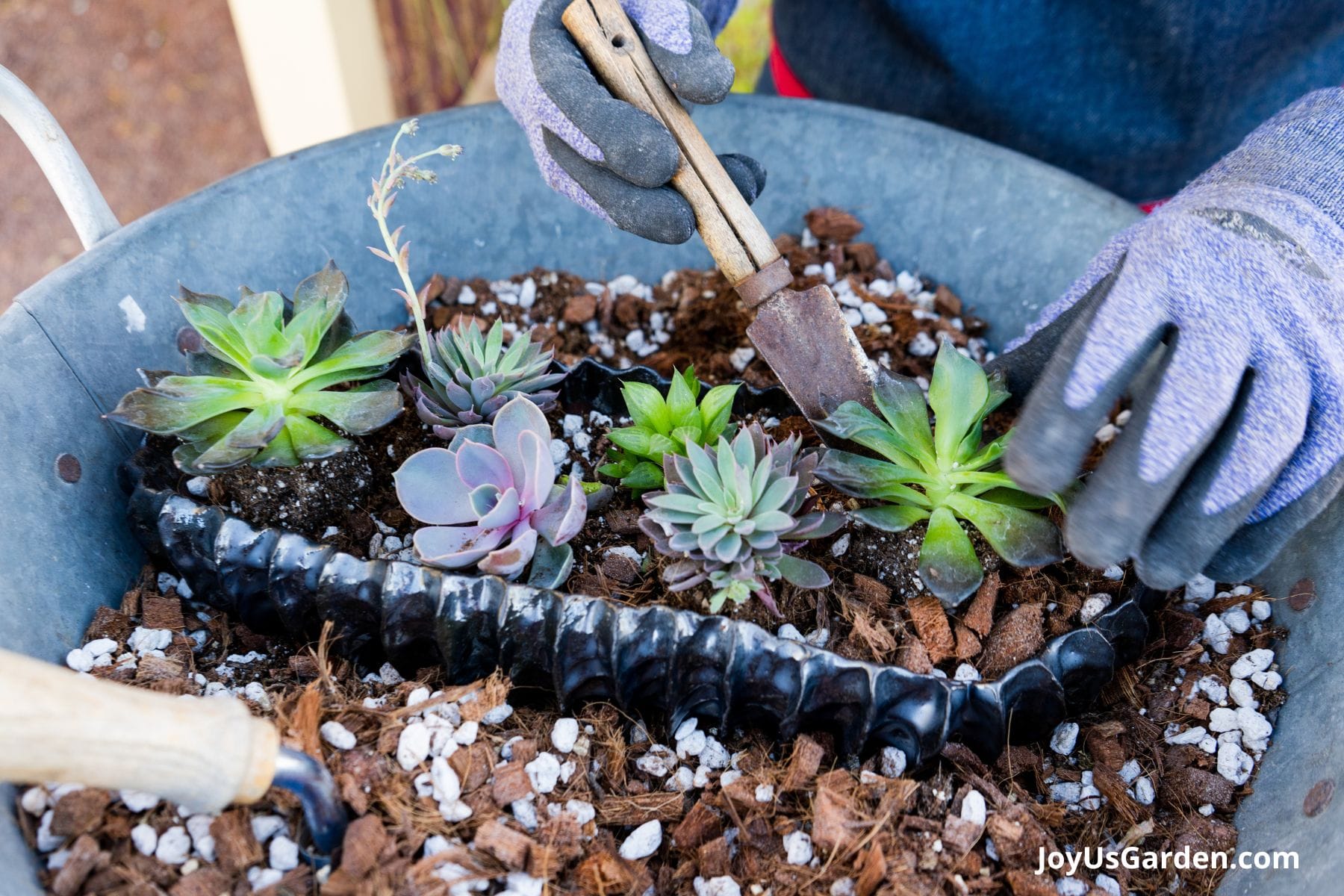
Best Time To Transplant Succulents
Spring and summer are the growing season for most plants, and when they put out new growth. This is the best time of year to plant/transplant/repot succulents into a new container. Early fall is fine if you live in a temperate climate with warmer winters.
I avoid transplanting in the winter months. If you transplant your succulents at this time, they won’t die. Just know it’s not the optimum time, so you might want to wait until spring.
Reasons For Repotting
The most common reasons include: the plant is growing, and the roots have outgrown the pot; it needs a larger base for anchoring; the pot size is fine, but the soil has gotten old and needs refreshing; or the plant has fallen or been knocked over (hopefully this doesn’t happen!).
I sometimes repot my succulents soon after buying them to get them into the potting mix I’d like them to be growing in. Unless the soil looks bad or the pot is too small, I leave them be for a while.
How Often To Transplant Succulents
You don’t need to rush to transplant them into a bigger pot because succulents don’t mind growing a bit tight in their pot. Most succulents don’t need repotting very often because they have a small root system. The smaller to mid-sized ones don’t root deep and can grow crowded just fine.
Depending on the type of succulent, the environment, the pot size they’re in, and the mix they’re growing in, transplanting will be needed every 3 to 6 years before you move it to a larger container. It’ll appreciate some fresh soil by that time!
Taller, fast-growing succulents, like my Pencil Cactus, may need repotting more often. They need a bigger base to support them as they grow tall, as large succulents are quite heavy. My Aloe Vera, which is 48″ tall by 50″ wide, needed a bigger pot because it had produced so many pups and spread like crazy.
Materials For Transplanting
You’ll need:
- New container, usually a larger one.
- Succulent soil mix. Here’s the DIY Succulent Mix Recipe I use.
- Trowel, cup, or plastic container for scooping the mix.
- Paper to cover drainage holes if they’re large or there are many. If there are multiple drain holes or one big drain hole, I like to cover them with a single layer of newspaper to prevent the fresh mix from flowing out. I use a toothpick or knife tip to puncture a small hole in the paper so the water runs out, but the loose mix stays in.
- Amendments. These organic materials are optional, but I always add a small amount of compost & worm compost when planting my succulents.
- Repotting mat. (optional also). I have this one, and it’s great to use to protect my kitchen island when filming YouTube videos. You’ll love it because it folds up small and flat for easy storage!
Pot Size
Unless I’m planting multiple plants into one pot to create a mixed garden, I go up one size to a slightly larger pot as a general rule of thumb. For example, from a 2″ or 3″ to a 4″ pot and from a 4″ to a 6“ pot.
Smaller succulents do well in smaller pots for an extended period. Small succulents growing in larger pots can rot out. The pot holds more soil mass that, in turn, can hold excessive moisture and not dry out quickly enough between waterings. Long, low planters or bowls are great for groupings of succulents.
As succulent plants grow taller and/or wider, they’ll need a larger pot. I have a 9′ Pencil Cactus growing next to my porch. It recently got transplanted into a 32″ pot.
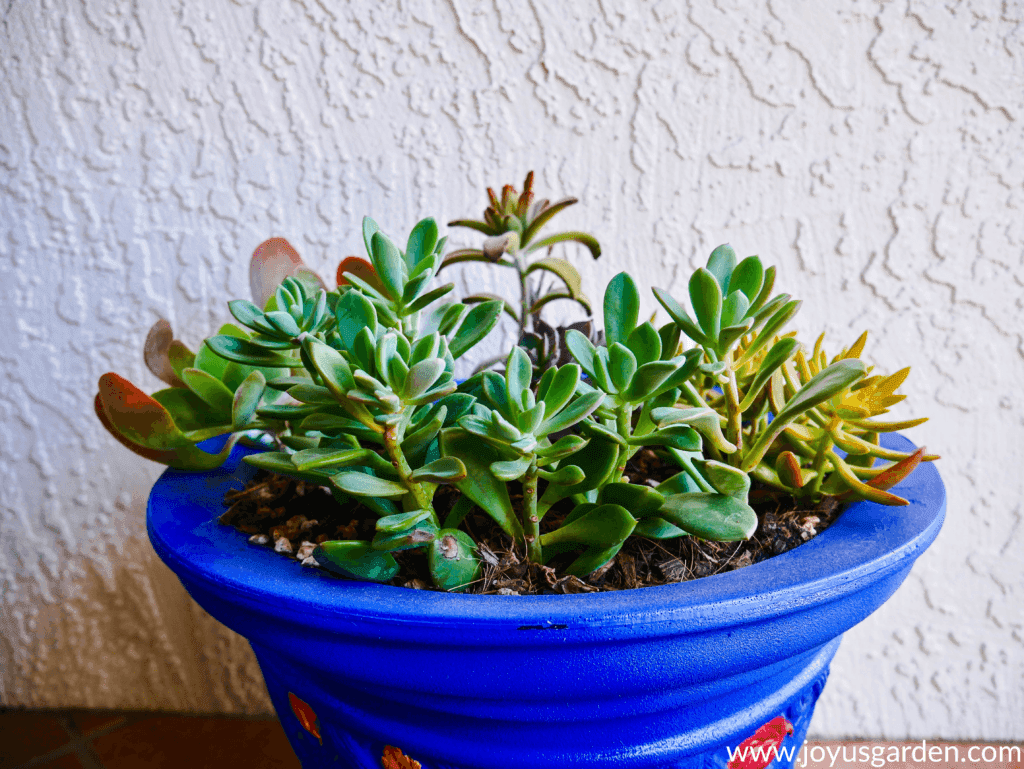
Pot Type
You’ll need something to grow your fabulous succulents in. They can either stay in a plastic grow pot and be placed in a decorative pot or planted directly in it. I do both on the regular.
As to planter material, I’ve found succulents aren’t fussy. I’ve grown them in plastic, metal, ceramic, and terra cotta. I love the look of succulents in terra cotta or clay pots – they suit each other to a T!
You might want to consider that unglazed ceramic pots and terra cotta pots are porous. This means they’ll dry out a bit faster. This is particularly good if your succulents are growing indoors.
When choosing a pot to transplant your succulents into, one with drainage holes on the bottom of the pot is best. Succulents and cacti kept too wet are highly susceptible to root rot, leading to their demise.
Having a pot with at least one drain hole, if not multiple drain holes, will let the excess water drain out. If your pot has a saucer, it’s a good idea to dump any standing water out after giving your plant some more liquid love.
Are you looking for your succulents? We’ve got you covered! Classic Terra Cotta Pots & Small Pots For Succulents
Soil Mix
Succulents are unique and do best in special soil. It’s debatable as to what the optimum succulent soil mix is because people have their favorites. The best succulent soil has good drainage, is a chunky mix, is well-aerated, and doesn’t hold much water.
Succulents don’t like wet soil, especially those that are growing indoors. Their fleshy leaves, stems, and roots store water and are subject to root rot if kept wet for too long. The mix needs to dry out between waterings.
I don’t recommend growing succulents in regular potting soil. It holds too much moisture and has a good chance of staying too wet. I’ve found that some of the commercial succulent mixes can also be too heavy for indoor succulents. You may need to add an amendment, like pumice or perlite, to lighten the mix.
I’ve used this DIY succulent and cactus mix for five years now for all my repotting, both indoors and outdoors. It’s very chunky and drains well. I also add in a bit of organic matter (a compost/worm compost blend) and topdress with a thin layer of the same.
Bonsai Jack is a popular mix you can buy online, along with Succulent Cult, Superfly Bonsai, & Dr. Earth. Other mixes to consider are Tanks and Hoffman’s.
Here’s a post dedicated to Succulent Soil with more details.
Steps To Transplanting
These simple steps will get you on your way to becoming a repotting pro.
* Water your succulent 3-5 days before repotting. You don’t want it to be too wet or too dry.
*Gather your materials.
*Remove the succulent from its current pot. If it’s in a plastic grower’s pot, you should be able to squeeze the sides to loosen it. If it’s being stubborn, is in a clay or ceramic pot, or a large pot, you’ll need a knife, trowel, or shovel.
*Check the roots to make sure they look healthy. I gently massage them to loosen them if they are tightly bound.
*Remove any of the old soil from the root ball.
*Fill the pot with new soil so the top of the root ball is slightly above the top of the pot. Don’t sink the root ball crown below the level of the soil mix. It’s best to plant it slightly above because the weight of the plant will eventually pull it down.
*Place the root ball in the center of the pot. If planting multiple succulents, make a pleasant arrangement.
* Fill around around the sides with the soil mix. Add in a bit of compost (optional) for nourishment. Top with a 1/4″ layer of compost.
*Don’t water your succulent after planting. Let it settle in dry. Aftercare instructions are below.
A Word of Warning: Fleshy succulent leaves fall off and/or break very easily when transplanting. I’ve repotted and planted 100’s of succulents, and believe me, it’s hard to prevent this.
Be as careful as you can when handling them, and you won’t lose as many. You can always propagate any broken stems (or individual leaves if you have the patience!).
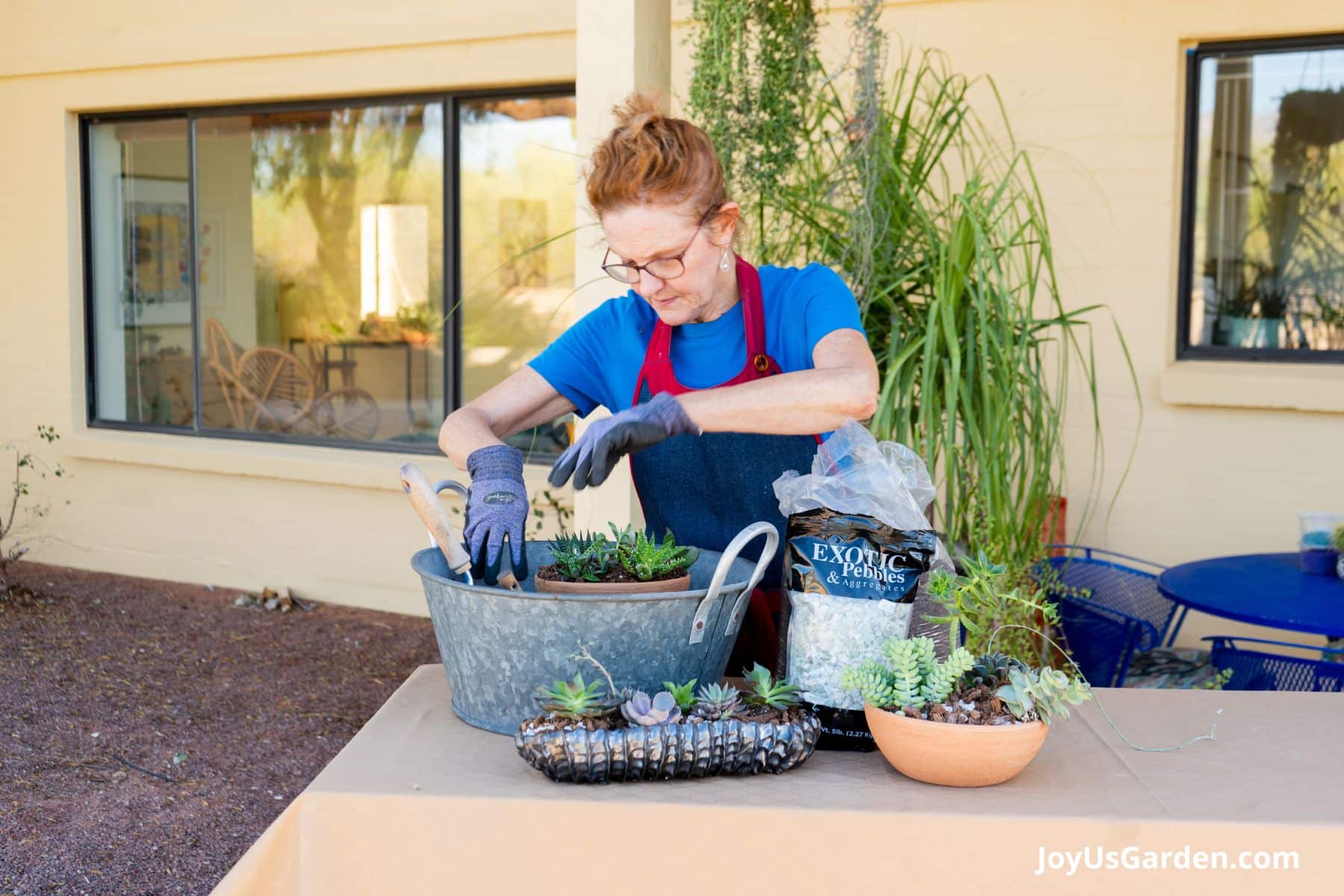
Want to learn more about How to Care for Succulents Indoors? Check out these guides!
Succulents In Pots Indoors
AfterCare
It’s simple. Move the transplanted succulent to a bright spot with a lot of natural light but out of direct sun (not in a south or west window).
Keep it dry for five to seven days before watering.
Watering frequency will depend on your home’s environment, the size of the succulent, and the mix it’s planted in. It’s important to allow the soil to dry out between waterings.
Are you new to succulent gardening? Here’s our guide on How To Water Succulents Indoors that you’ll find helpful.
Exposure
Indoors, most succulents require high light to do their best. They need a lot of bright, natural light when growing indoors; otherwise, they will get leggy or have little growth.
If you’re in a climate with less sun, yours will need more hours of sunlight. Somewhere near but not in a south or west window would be best.
Note: We recommend planting succulents in pots with at least one drainage hole. Our guide on Repotting & Caring For Succulents In Pots Without Drain Holes will be helpful if you find a special container with none or don’t want to drill holes.
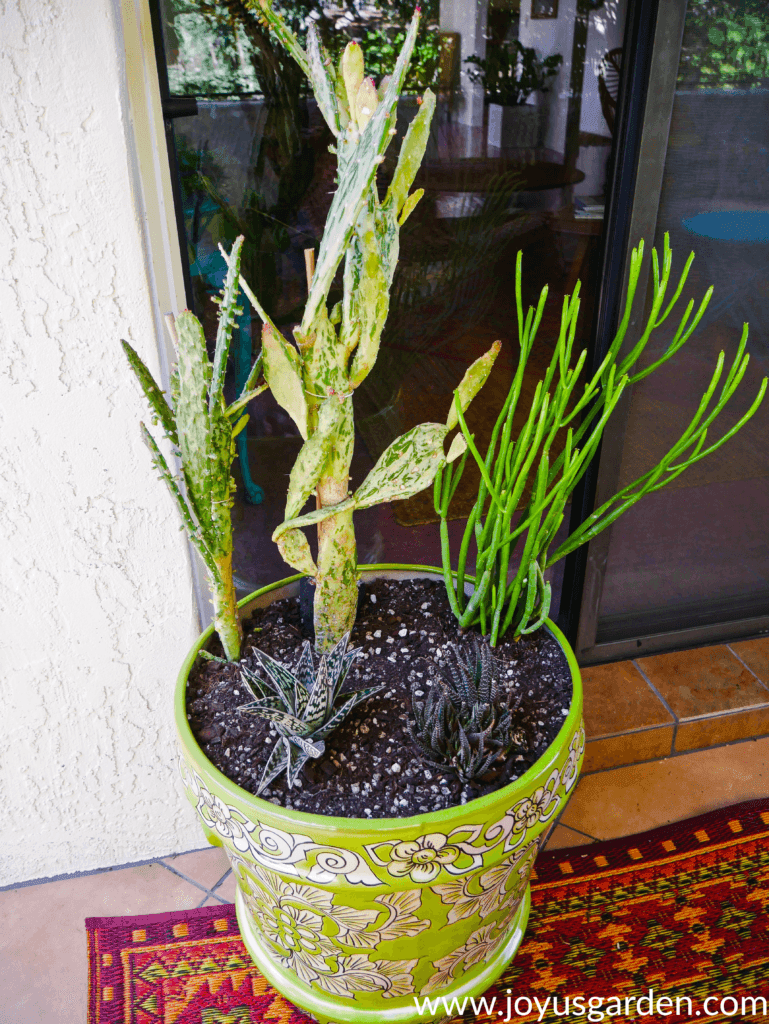
Succulents In Pots Outdoors
AfterCare
Move your succulent to a bright location, sheltered from the prolonged direct, hot sun. Let it settle in dry for 5-7 days before watering.
Exposure
Fleshy succulents do best in “cooler,” less intense sun. My succulents grew fine in full sun when I lived in Santa Barbara, which is on California’s coast.
I now live in Tucson, where my fleshy succulents grow in bright shade because they’ll burn in direct sun exposure. I keep them in locations sheltered from the hot afternoon, midday, and late-day sun.
These posts on How Much Sun Succulents Need & How Often To Water Succulents will provide more info.
Transplanting Succulents In Pots Video Guide
In conclusion, important things to know about the repotting process include using the proper potting mix, having a suitably sized pot, making sure there are drainage holes on the bottom of the container, and being mindful of the aftercare.
Transplanting your succulent will have a positive effect on its health and growth. I’ve been planting and moving succulents for years, and they don’t seem to skip a beat. They’re so interesting and are beautiful planted solo or in groupings.
If this is your first time transplanting succulents in pots, I hope this has helped you. It’s not hard to do, and you’ll be a pro in no time!
Happy gardening,



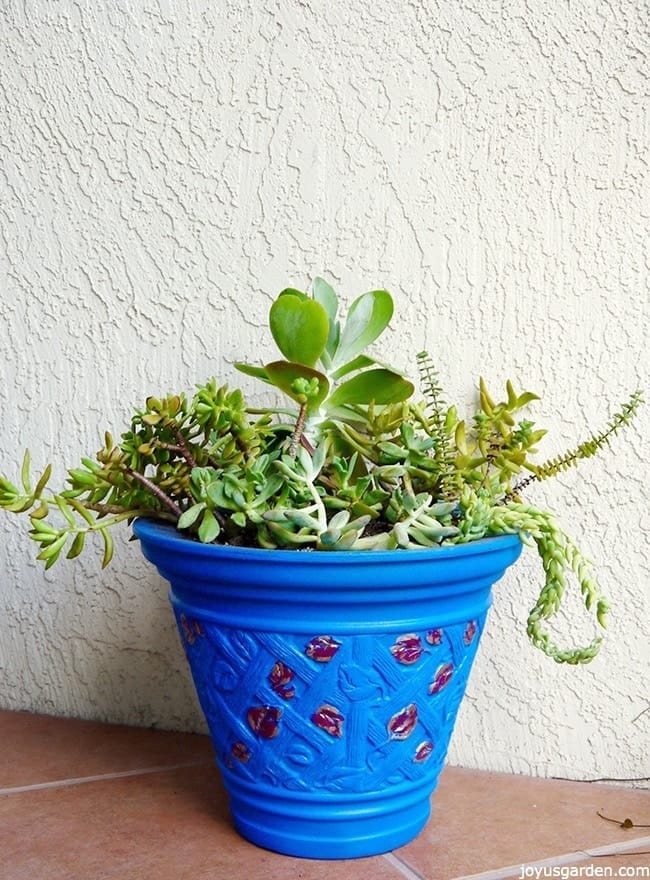
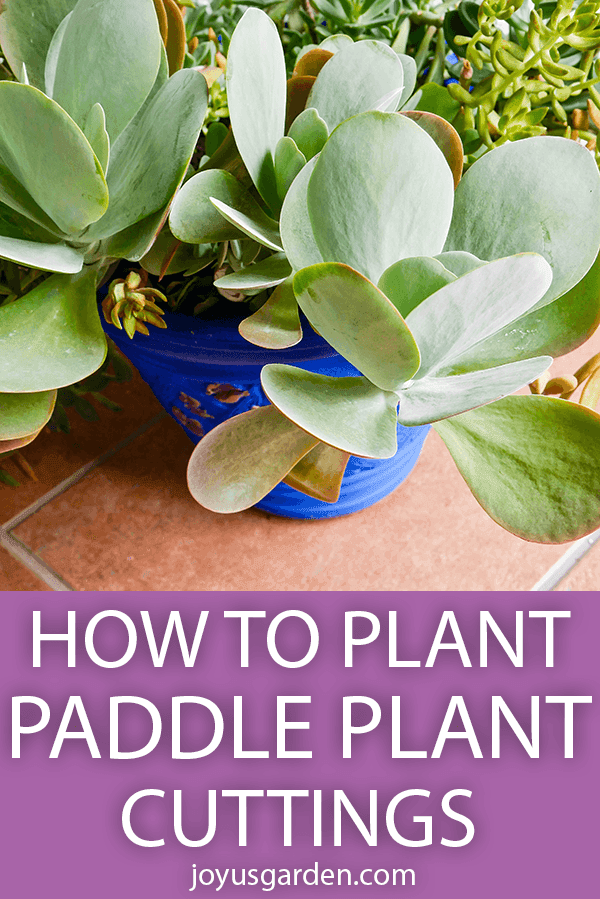
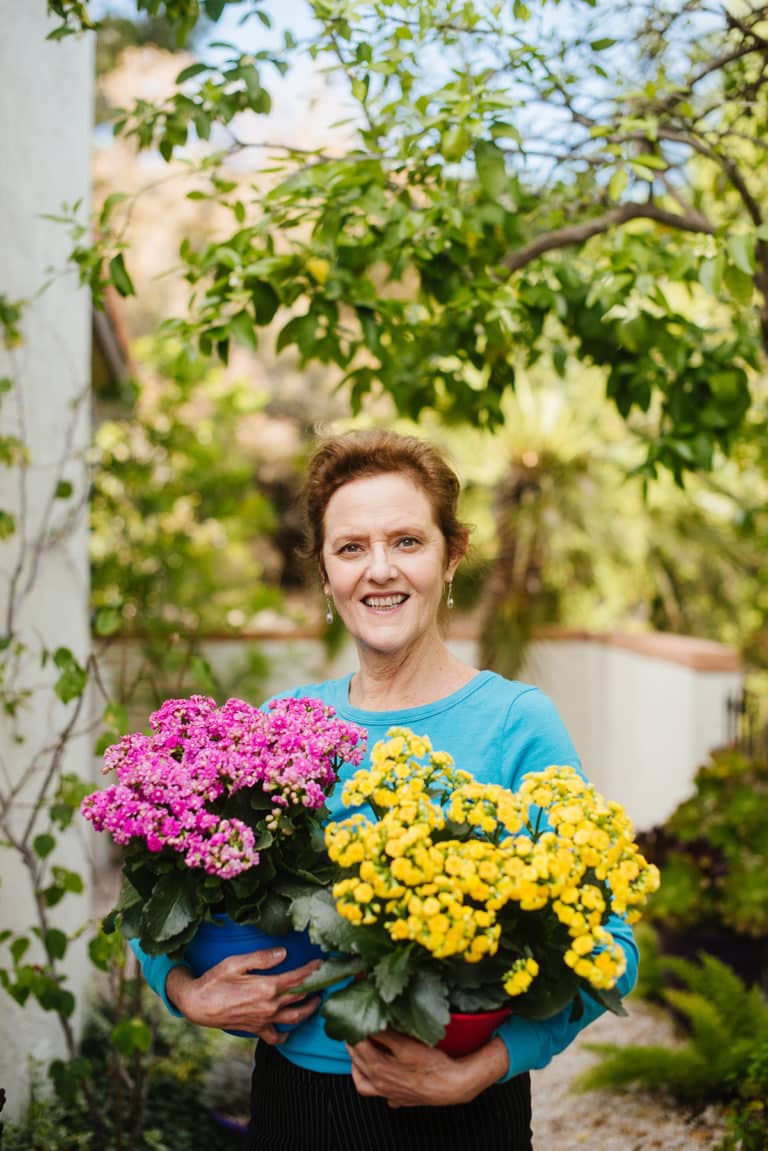

Thank you for your info and experience!
You’re certainly welcome Cynthia! Nell
Is there any way we can e mail this article to someone who has the garden full of succulents.
Pintrest says that the article is too long to save. please have the link for email. thx
Hi Vee – Yes I did. Because it’s warmer & drier here in Tucson than where I used to live on the CA coast, I heal them off for a shorter period of time. Nell
Hi Vee – Yes. You can copy the link from the website & then email it. Or, send the person to our website & they can look at our “Succulents” category to see all posts. Nell
Hi Nell! How do you heal the cuttings off? (Or did I miss something?) Thank you
Hi Norma – Make sure your pruners are clean and sharp. Simply cut the stems to the length you want, peel the bottom 1/3 of the leaves off & then let those stems heal off (this is where the cut end of the stem callus over) for 2 weeks to 4 months before planting. I keep them in a bit spot out of direct sun. Nell
I have some wire hanging pots – the kind that uses coconut fibre as the actual pot. Can I use this instead of ceramic pots for my succulents? I live in South Australia, where the climate is similar to that of Arizona.
Yes you can Paula. They do very well in those types of containers. Nell
Hi! I purchased a set of three succulents and they came in a glass container, do I need to repot them/repot each succulent in a separate pot? Thank you!
Hi Afreen – You can if you’d like. Succulents transplant very readily. Or, you can transplant them into 1 pot with a drain hole. Nell
Hi Nell,
Thank you for ALL the guidance. Two questions; 1. Many of my succulents are newer. I am out of room and would like to combine some of the succulents into one pot to save room. Will this be too hard on the plant? Most are various Echeveria.
2. Should the soil be dry at the time of transplant, and then water afterward.
If it matters, I’m in Florida (hot and humid) and use Bonsai Jack soil.
Again, thanks. Debra
Hi Debra – Bonsai Jack soil is fine. Succulents handle transplanting very well & you could combine them in 1 pot. The soil should be on the drier side. I always let them settle in =for a few days before watering. Nell
Hi Nell, I have a succulent at my desk at work that seems to be dying. I work at an office where it’s constantly air conditioned and the lights are always on. I was thinking re-potting it may help the plant but I’m not sure. Should I take the plant home? And what plants do you recommend for an office? I’d like some greenery to liven up my desk. Thank you!
Hi Ariana – It may not be getting enough light. You should take it home & put it in bright light. Here are some low light indoor plants: https://www.joyusgarden.com/10-easy-care-houseplants-for-low-light/ Nell
I won an escheveria plant that is potted in a ceramic pot. I want to repot it into a clay pot without damaging the leaves. I tried turning it upside down but it will not come out of the pot. It seems to be glued into the pot! Do you have any suggestions for getting it out of the pot without breaking the pot or the plant?
Hi Laraine – Try running a knife around the root ball a few times & see if it budges. That usually works for me. Nell